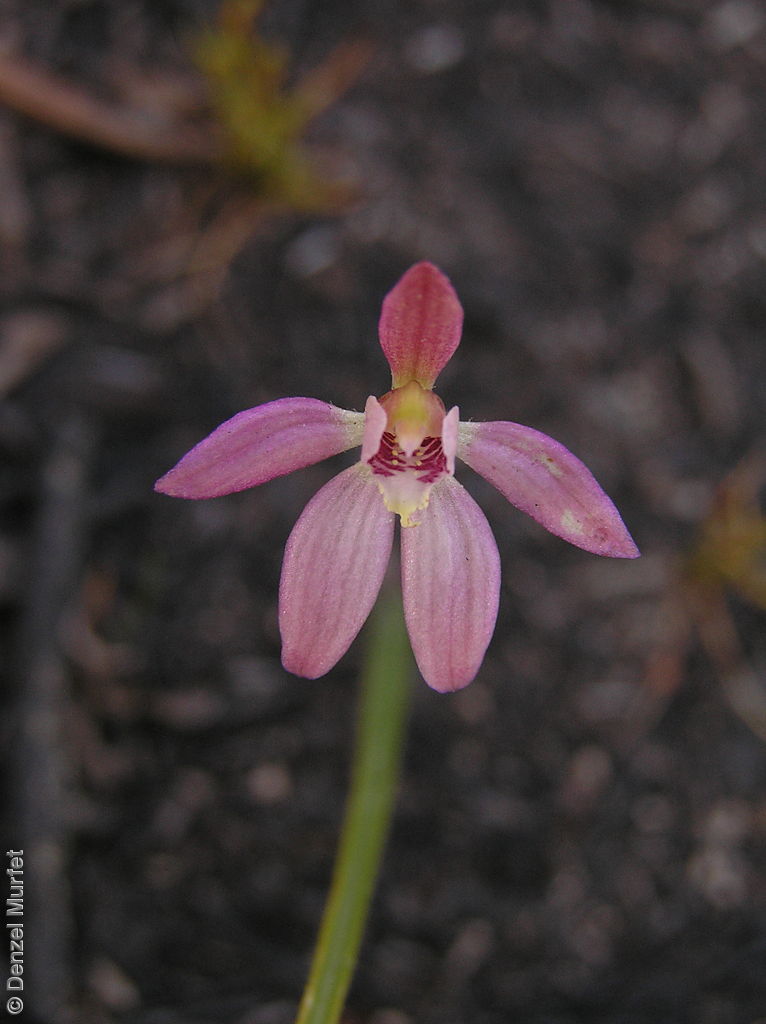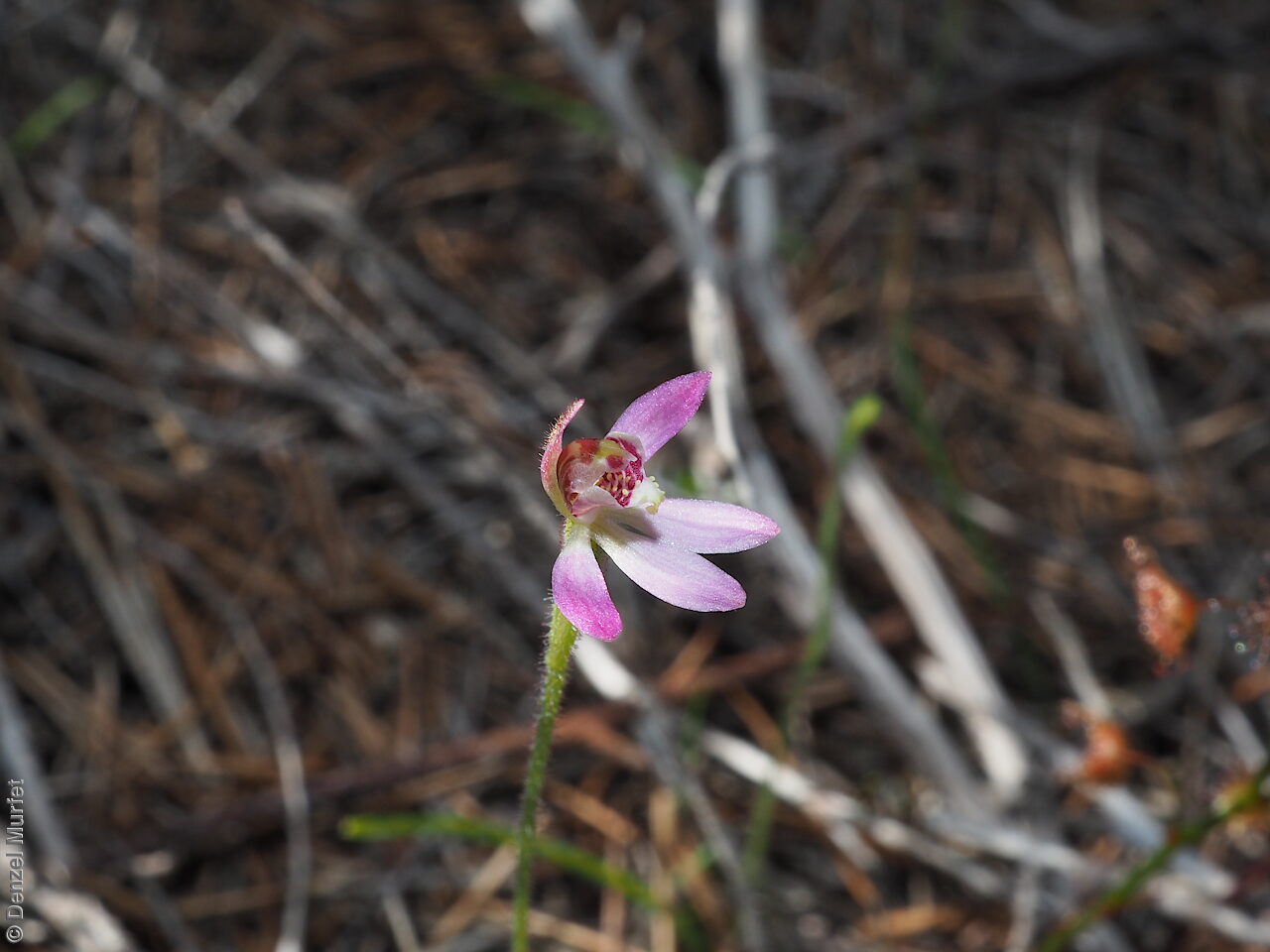













Botanical art
Etymology
Caladenia from the Greek 'kallos' meaning beauty and 'aden' meaning a gland, referring to the colourful labellum and the glistening glands at the base of the column that are present in many of the species. Mentiens from Latin meaning counterfeiting or imitating, referring to the similarity of this species to Caladenia minor and C. pusilla.
Distribution and status
Found in the southern Mt Lofty Ranges, Kangaroo Island and in the lower South-east in South Australia, growing in woodland and heath on moisture-retentive soils. Also found in New South Wales, Victoria and Tasmania. Native. Rare in South Australia. Rare in the other states.
Herbarium regions: Eyre Peninsula, Southern Lofty, Green Adelaide
NRM region: Adelaide and Mount Lofty Ranges
AVH map: SA distribution map (external link)
Plant description
Slender terrestrial orchid to 16 cm in flower. Leaf single, to 9 cm long, erect, dark green, sparsely hairy. Flower to 11 mm, single whitish or pinkish borne on a stalk to 16 cm tall. Backs of sepals and petals a darker pink colour. Dorsal sepal is erect, to 9 mm long and the lateral sepals are about the same length but slightly wider. Petals to 9 mm long and 2.5 mm wide. Lateral sepals and petals are held close to horizontally. Labellum to 6 mm long and wide, cream-coloured with red cross-bars and a yellowish tip with a few short teeth near the tip and two short rows of yellow calli with red stalks in the centre. Flowering between September and October. Fruits are pale-brown hairy, papery ellipsoid capsule containing numerous tiny seeds.
Seed collection and propagation
Collect seeds between October and November. Collect fat capsules as they start to dry and turn brown. Pods will split and release the seeds quickly and will require monitoring. To increase the chances of collecting mature pods, it is recommended that a small breathable bag (ie. Organza bags) be used to enclose the developing capsules. Place the capsules in a container that will hold fine seeds and leave to dry for a few weeks or until the capsule split. Then carefully hold the capsule and tap it gently to release the seeds. Store the seeds with a desiccant such as dried silica beads or dry rice, in an air tight container in a cool and dry place, refrigerator or in liquid nitrogen.